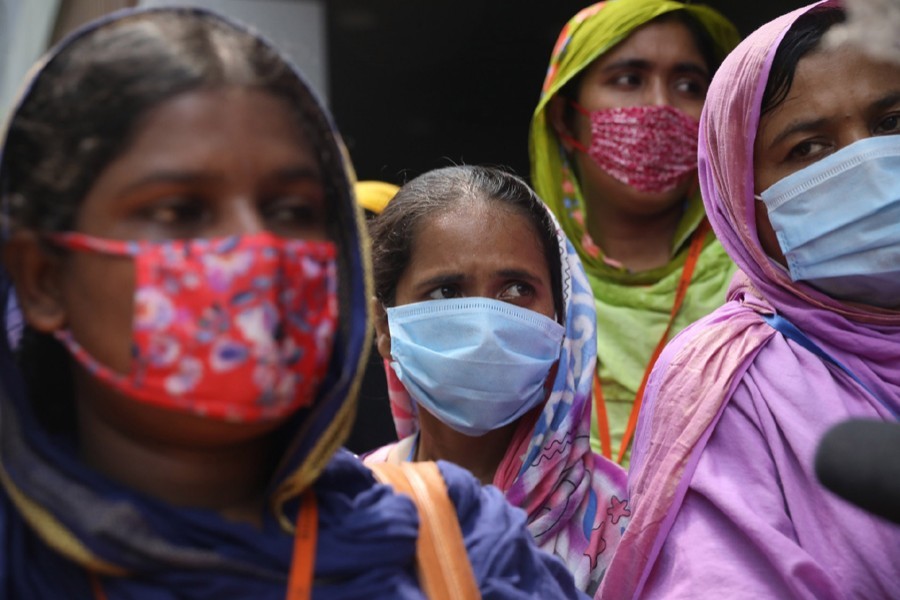United Nations Emergency Relief Coordinator, Mark Lowcock has painted a bleak picture of the humanitarian overview of the planet. So bleak the year ahead looks that, he admits, 'if we get through 2021 without major famines that will be a significant achievement'. In fact, he has expressed his apprehension of 'multiple' famines. Mr Lowcock appealed for $35 billion to help and protect 235 million most vulnerable people in the fragile and poor countries across the globe. This means a 40 per cent rise in the population requiring assistance and protection next year on those already reeling from conflict, displacement and climate change shocks in 2020. This increase in the population in need of humanitarian assistance will mostly be caused by the adverse impact of the pandemic.
The UN Emergency Relief Coordinator disarmingly states that the UN and its partners are 'overwhelmed'. Unless the rich nations come forward with funding, the situation of the vulnerable people in the poorer parts of the planet will be dire and their survival will be at stake. Echoing his sentiment UN Secretary-General Antonio Guterres also appealed for the funding and urged all to 'stand with people in their darkest hour of need'.
Indeed, there is light at the end of the tunnel with vaccines proving effective against coronavirus. However, as Mr Lowcock observes, 'richer countries have invested a sum of around $ 10 trillion' to stave off the disaster arising out of economic downturn caused by the global health crisis but the poorer nations had no such backup measure to induce an economic turnaround in the near future. Unless vaccines are distributed free among those nations, people cannot afford the preventive medicine.
Bangladesh may not find itself among the poorest countries but it is certainly one of the eight among the 10 countries most vulnerable to the effect of climate change. In fact, the UN did extend its helping hand during the natural calamities this country suffered this year to mitigate the suffering of the affected people. Cyclone and repeated floods have not only caused people immense sufferings but also damaged standing crops to a large extent. The country's food production dropped substantially. Aman paddy cultivation suffered the worst with a projected yield drop by 2.5 million tonnes from a target of 15.6 million tonnes. However, Boro yield was a record at 20.4 million tonnes. Thus Bangladesh had a total of 36 million tonnes of paddy production, making it the third largest producer of the cereal.
Clearly, food shortage is not on the cards and food security faces no immediate threat. But still the rice market is jittery. Government stock of the staple has come down to just 0.577 million tonnes from 1.0 million in just two months. Around this time last year the stock was 1.1 million tonnes. A fracas in the procurement drive in the Boro season is responsible for this shrinkage of stock. Now, procurement of Aman is facing a similar obstacle. Millers have refused to supply parboiled rice at the rate of Tk 37 a kilogram. They argue that paying Tk 26 for a kg of paddy, the production cost of a kg of rice comes to Tk 41. So unless the government increases the procurement price by Tk 4.0, they cannot supply rice to the government. They further add that they are ready to forego profit but cannot incur losses by supplying rice at the government-fixed rate.
On its part the government sticks to its point. It would import rice rather than give in to the demand of the millers. There was a similar tussle earlier when the millers suddenly started raising prices by Tk 4.0-6.0 a kg. The government responded by fixing the maximum prices for different varieties of rice. After a prolonged psychological war, both sides agreed to a price in between.
Here the government faces a dilemma. It has to protect the interests of farmers and at the same time take care of the poor and the fixed income groups. Over the past few years, it was the farmers who actually incurred losses on account of rice cultivation because of slump in paddy price. Middlemen and millers, however, did not have any problem pocketing enough profits. All because they purchased paddy at a low price and dictated rice price by manipulating the market!
Now the government intervention is unwelcome to them. The crux of the problem lies here. This pandemic has severely eroded income of the vulnerable segments of people. Many have lost their livelihoods. If the price of the staple goes up, they are likely to starve. There may not be a famine but food intake for them will be drastically limited and its impact will be terrible not only on them but also on their children. If the UN bodies cannot carry out their immunisation programme, food-supplemented education for children of the vulnerable communities in society, like many other poor nations Bangladesh will also fall behind in terms of human development.
The government has decided on import of rice from countries willing to export. If it imports from India, the price with duty of a kilogram of rice will be Tk 34. It will be Tk 45 if imported from Thailand. In that case, too much import can harm farmers' interests. However, sufficient stock or production is no guarantee for avoiding food crisis for all. As Amartya Sen has clarified, the important thing is distribution of food.
Mass vaccination of the population cannot be expected before the end of next year. By this time, the need is to provide for the population freshly turned vulnerable on account of the pandemic. Both the provisions of food and livelihoods have to be made available to them as part of a damage-control measure.
nilratanhalder2000yahoo.com


